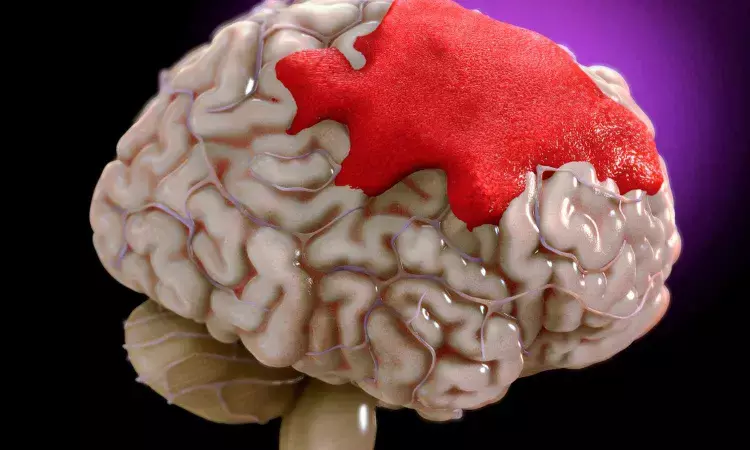- Home
- Medical news & Guidelines
- Anesthesiology
- Cardiology and CTVS
- Critical Care
- Dentistry
- Dermatology
- Diabetes and Endocrinology
- ENT
- Gastroenterology
- Medicine
- Nephrology
- Neurology
- Obstretics-Gynaecology
- Oncology
- Ophthalmology
- Orthopaedics
- Pediatrics-Neonatology
- Psychiatry
- Pulmonology
- Radiology
- Surgery
- Urology
- Laboratory Medicine
- Diet
- Nursing
- Paramedical
- Physiotherapy
- Health news
- Fact Check
- Bone Health Fact Check
- Brain Health Fact Check
- Cancer Related Fact Check
- Child Care Fact Check
- Dental and oral health fact check
- Diabetes and metabolic health fact check
- Diet and Nutrition Fact Check
- Eye and ENT Care Fact Check
- Fitness fact check
- Gut health fact check
- Heart health fact check
- Kidney health fact check
- Medical education fact check
- Men's health fact check
- Respiratory fact check
- Skin and hair care fact check
- Vaccine and Immunization fact check
- Women's health fact check
- AYUSH
- State News
- Andaman and Nicobar Islands
- Andhra Pradesh
- Arunachal Pradesh
- Assam
- Bihar
- Chandigarh
- Chattisgarh
- Dadra and Nagar Haveli
- Daman and Diu
- Delhi
- Goa
- Gujarat
- Haryana
- Himachal Pradesh
- Jammu & Kashmir
- Jharkhand
- Karnataka
- Kerala
- Ladakh
- Lakshadweep
- Madhya Pradesh
- Maharashtra
- Manipur
- Meghalaya
- Mizoram
- Nagaland
- Odisha
- Puducherry
- Punjab
- Rajasthan
- Sikkim
- Tamil Nadu
- Telangana
- Tripura
- Uttar Pradesh
- Uttrakhand
- West Bengal
- Medical Education
- Industry
Recurrent Intracerebral Hemorrhage Often Strikes Close to Initial Site, Study Finds

Switzerland: A recent study published in JAMA Neurology has highlighted key factors influencing the recurrence of nontraumatic intracerebral hemorrhage (ICH), focusing on location and timing. The study revealed that approximately 46% of recurrent cases occurred in regions adjacent to the initial bleed. The average time to recurrence was 1.25 years for adjacent hemorrhages, notably shorter than the 2.21 years observed for remote recurrences.
"The findings also indicated that lobar ICH and cerebral amyloid angiopathy significantly increased the likelihood of adjacent recurrence, nearly doubling the risk. In contrast, cerebellar ICH was associated with a lower risk of recurrence. These results emphasize the influence of localized vasculopathic changes in the recurrence of ICH," the researchers reported.
The researchers note that intracerebral hemorrhage, a severe type of stroke, often leads to long-term neurological impairments and increased mortality. While recurrence is a well-recognized challenge, understanding whether subsequent hemorrhages occur in the same or nearby locations remains crucial for clinical decision-making. Considering this, Martina B. Goeldlin, Department of Neurology, Inselspital Bern University Hospital and University of Bern, Bern, Switzerland, and colleagues aimed to evaluate the timing and location of recurrent ICH events about the initial ICH, distinguishing between adjacent ICH (adjICH) and remote ICH (remICH).
For this purpose, the researchers conducted a pooled analysis of individual cohort studies from 2002 to 2021, focusing on hospital-based European cohorts. The study included patients who had experienced at least two clinically distinguishable small vessel disease–related intracerebral hemorrhage (ICH) events. Data analysis was carried out from December 2023 to December 2024.
Researchers examined ICH location and underlying small vessel disease type, with adjacent ICH (adjICH) as the primary outcome and time to recurrence as the secondary outcome. Multivariable regression analyses were performed, adjusting for factors such as ICH location, cerebral amyloid angiopathy, hypertension, and antihypertensive treatment.
The key findings of the study were as follows:
- The study included 733 patients with a median age of 72.4 years, of whom 47.2% were female.
- 1,616 ICH events were recorded, including 733 initial (index) and 883 recurrent events, with patients experiencing up to six recurrences.
- Over a median follow-up of 2.53 years, 46.4% of patients had adjacent ICH (adjICH), while 53.6% had remote ICH (remICH).
- Among recurrent cases, 476 were adjICH, and 407 were remICH.
- Lobar index ICH (aOR 2.08) and cerebral amyloid angiopathy (aOR 2.21) were linked to a higher risk of adjICH.
- Cerebellar index ICH was associated with lower odds of adjICH (aOR 0.25).
- The median time to recurrence was 1.25 years for adjICH and 2.21 years for remICH.
- Previous lobar or convexity subarachnoid hemorrhage, adjICH, and a higher number of prior ICH events were independently linked to a shorter time to recurrence.
The researchers found that early recurrence and characteristics of cerebral amyloid angiopathy were strongly associated with adjacent ICH. Their findings indicate that regional, tissue-based factors may contribute to recurrence, with spatial and temporal clustering suggesting localized vulnerabilities.
"By identifying and targeting these vasculopathic changes, our study highlights potential novel treatment approaches to reduce the risk of recurrent ICH," they concluded.
Reference:
Goeldlin MB, Fandler-Höfler S, Pezzini A, et al. Location and Timing of Recurrent, Nontraumatic Intracerebral Hemorrhage. JAMA Neurol. Published online March 03, 2025. doi:10.1001/jamaneurol.2025.0026
Dr Kamal Kant Kohli-MBBS, DTCD- a chest specialist with more than 30 years of practice and a flair for writing clinical articles, Dr Kamal Kant Kohli joined Medical Dialogues as a Chief Editor of Medical News. Besides writing articles, as an editor, he proofreads and verifies all the medical content published on Medical Dialogues including those coming from journals, studies,medical conferences,guidelines etc. Email: drkohli@medicaldialogues.in. Contact no. 011-43720751


